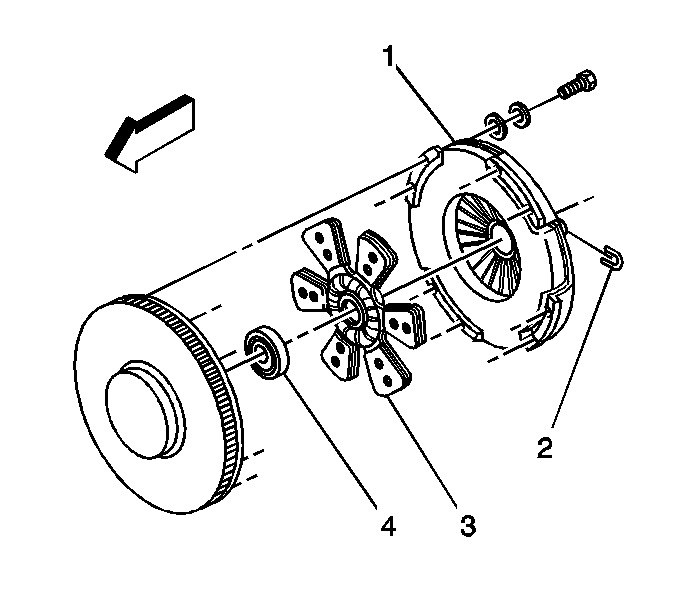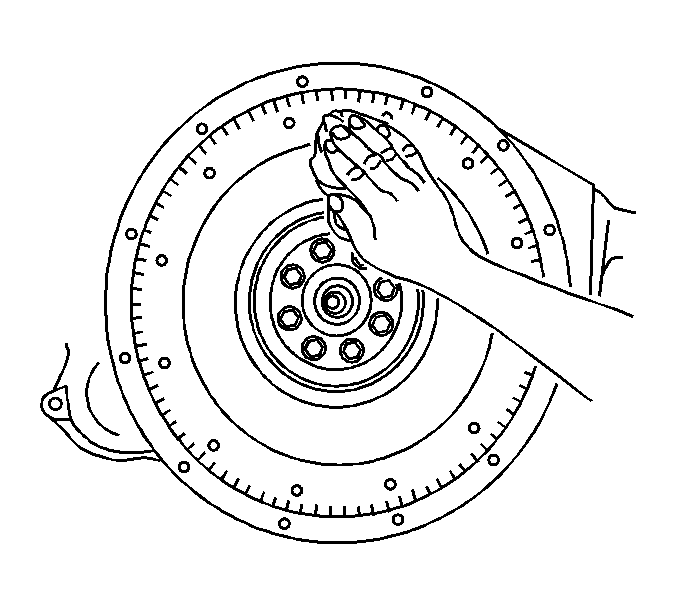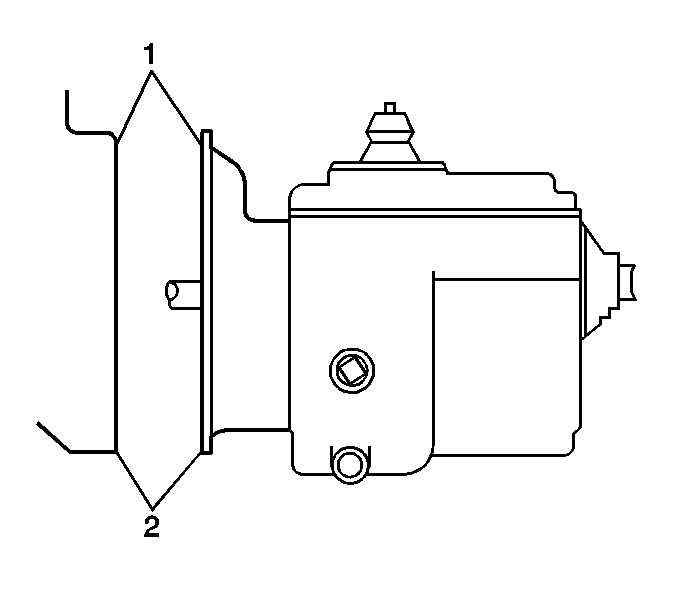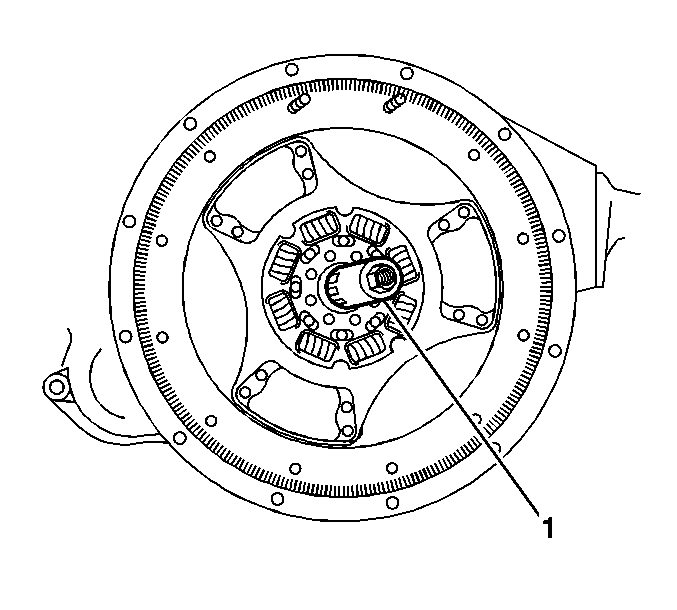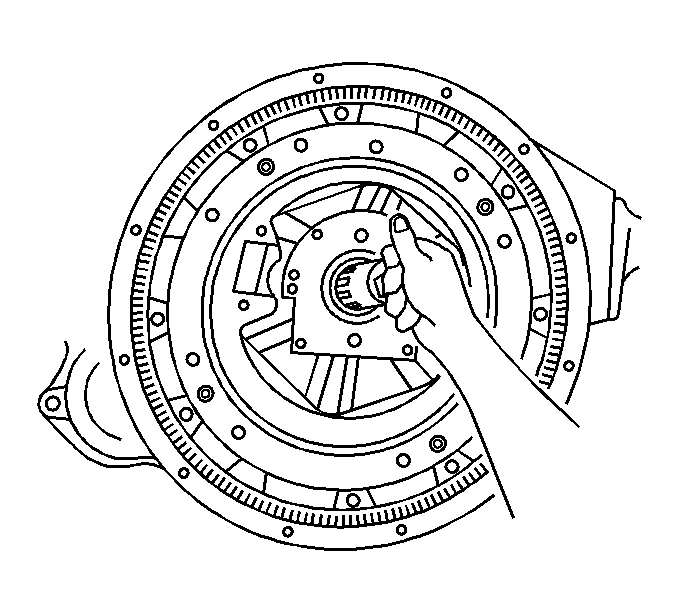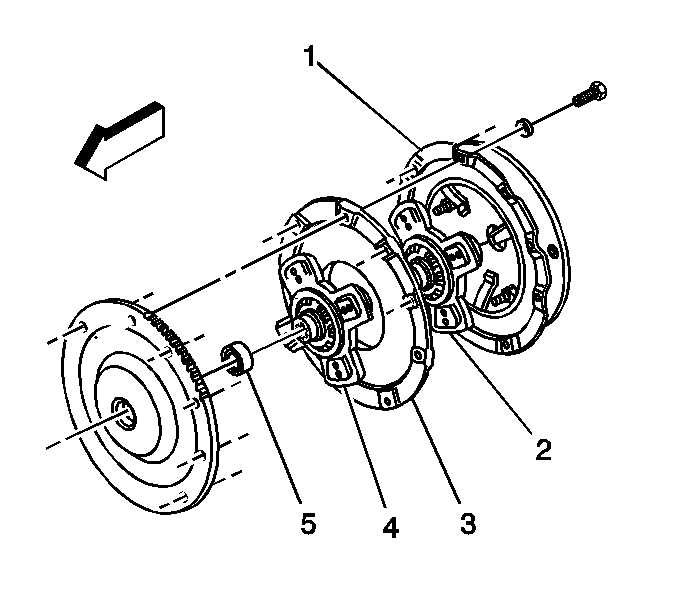
- Install the clutch pilot bearing, if necessary.
Note: Ensure that the side marked "Flywheel Side" faces the flywheel.
- Install the clutch driven rear plate by inserting the
J-35989 or
J-45274 (1) through the plate splines and into the pilot shaft.
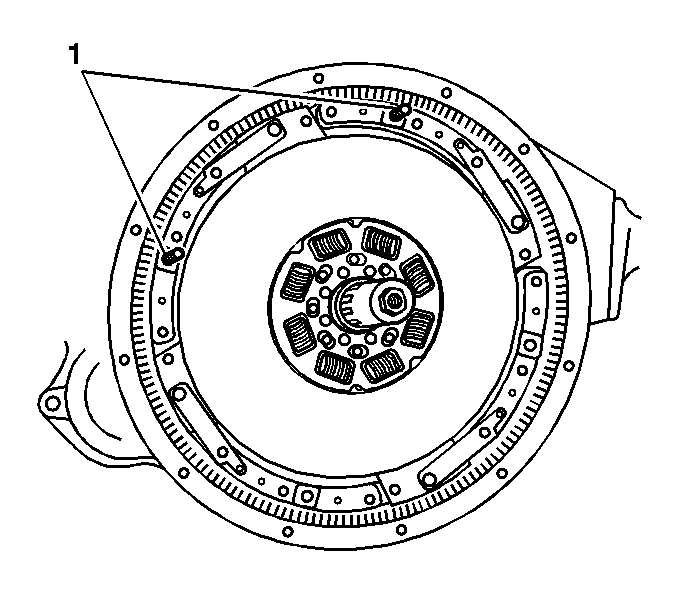
- Install two 3/8 x 16 x 3 inch long guide studs (1).
Note: Ensure that the side marked "Pressure Plate Side" is facing the pressure plate.
- Install the clutch intermediate plate over the studs and forward until the plate touches the flywheel.
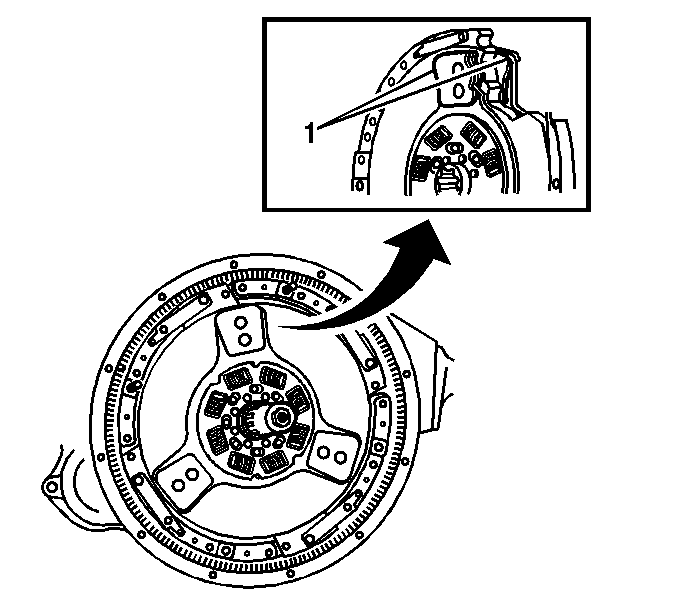
- Remove the
J-35989 or
J-45274 .
Note: Ensure that the side marked "Pressure Plate Side" is facing the pressure plate.
- Install the
J-35989 or
J-45274 through the splines of the clutch driven rear plate, and insert the
J-35989 or
J-45274 with the rear plate into the pilot bearing.
- Ensure that the ceramic buttons (1) align with each other as closely as possible, in order to aid the function of the positive roll pins.
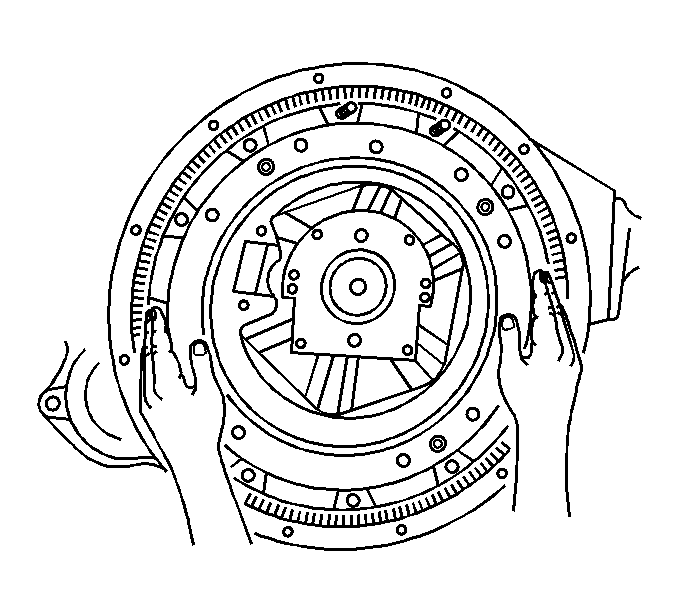
- Slide the pressure plate over both the guide studs and the
J-35989 or
J-45274 , until it rest against the intermediate plate.
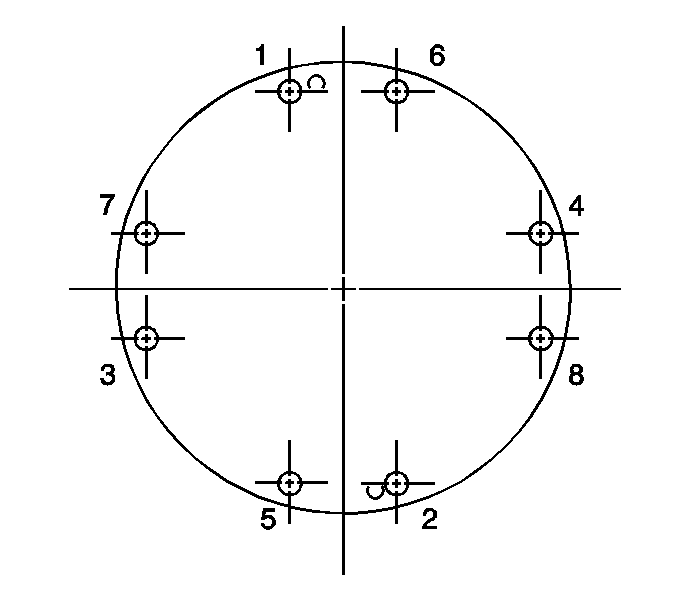
- Install 6 clutch pressure plate bolts, with washers, until finger tight.
- Remove the 2 guide studs, and install the final 2 clutch pressure plate bolts, with washers, finger tight.
Caution: Refer to Fastener Caution in the Preface section.
- Tighten the clutch pressure plate bolts, in the sequence shown.
Tighten
- Tighten the clutch pressure plate bolts a first pass to 10 N·m (7 lb ft).
- Tighten the clutch pressure plate bolts a final pass to 54 N·m (40 lb ft).
- Remove the
J-35989 or
J-45274 .
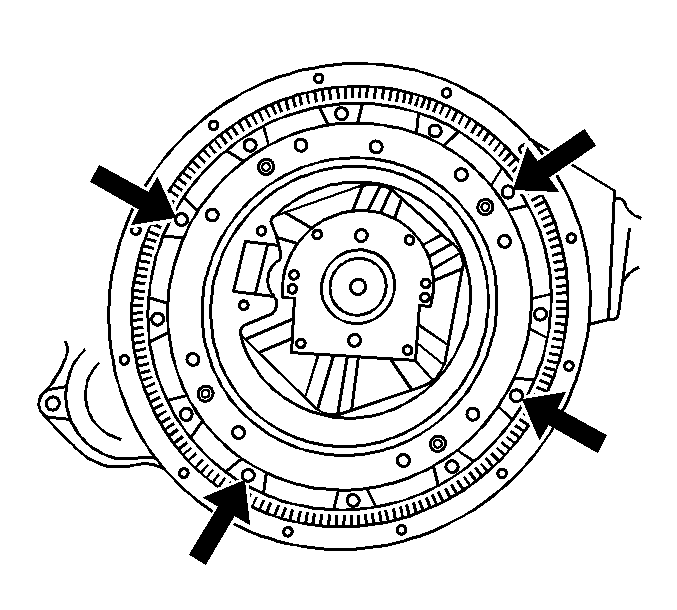
- Using a hammer and a flat nose punch, lightly tap the 4 roll pins through the access holes, as shown, of the clutch cover.
- Ensure that the roll pins are against the flywheel. This will allow an equal gap on all sides of the intermediate plate during clutch disengagement.

Note: The roll pins may be damaged of struck with excessive force.
- Only a small portion of the roll pin (2) will be visible through the access hole (1) of the pressure plate (3).
Note: Do not pull the release bearing back during the installation. Pulling the bearing back prior to transmission placement may cause the clutch to over adjust, an over adjusted clutch will not perform properly.
- If the clutch is inadvertently over adjusted, follow this procedure:
| 16.1. | Pull the bearing away from the clutch until it comes to a stop and hold. The stop is internal if the transmission is not in place or the trans bearing cover/clutch brake is in place. |
| 16.2. | Slide the wear indicating tab to the new position, very little force is required. |
| 16.3. | Return the bearing toward the cover. The tab will stay in the new position. |
| 16.4. | After the trans is in place reset the bearing position by stroking thorough the full range, 5 times. |
Note: Do not use the release lever to pull the transmission into its final position. Doing so may cause the clutch to over adjust. See over adjusted procedure above.
- After the transmission mounting bolts have been torqued, place a suitable tool over the release arm/shaft and completely release the clutch until the bearing comes to a complete stop. Stroke the bearing through its full range, 5 times. This process
allows the clutch to adjust itself to the specific flywheel and transmission bearing cap position. Failure to do so will result in incorrect bearing position causing incorrect linkage set up.
- Install the transmission. Refer to
Transmission Replacement.
